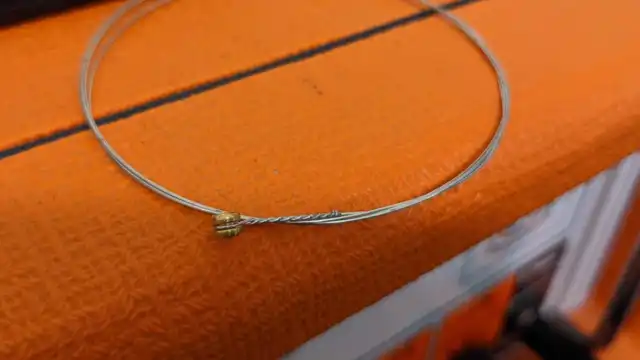Can You Use a Plain 4th Guitar String?


Can you play your guitar with a plain D string? I mean, you can, but I'm not sure why you'd want to...
Ill-advised though it may be, we see enough people ordering plain 4th strings in custom sets of Stringjoys that we thought we'd try out a plain 4th ourselves. So that you don't have to.
Video Transcription
So you've heard all about wound thirds, but have you ever tried a plain fourth? Well, odds are you probably haven't and you and I have that in common, because I've never done it either, outside of our set where we made all plain strings, but that was a weird one...
So today it's going to be a short video, but an idea I wanted to explore of what the heck happens if you take a plain fourth string, and pop it into a regular standard set. So what we're going to do is we're going to take my Les Paul, use our usual 10 to 48 set, but instead of the 26 wound that you usually see on the fourth string, we're going to do a 24 plain. Now we do that because the mass is a little bit different between plain and wound strings, so a 24 will be more similar to a 26 wound string. Just trust me on it, it's what's going to be best. I don't know how this is going to go. I've never done it. We're going to find out together and see if there's any merit to it.
So I'm going to assume you are a guitarist, again, I assume if you're not a guitarist, I'm not sure why you're watching this. Maybe just to see this handsome face. Probably not. Anyway, I'm going to assume that you probably know what a normal guitar sounds like with a wound fourth. So I don't think we really need to do a straight-up A/B test demo and make this even longer. So I just went ahead and popped this 24 plain on here. We're tuning it up. One thing to always keep in mind with super, super heavy plain strings is the steel is so strong that it usually takes a minute to tune up because the steel has to usually bend around the tuning peg, which can take a second. So we're getting it there right now.
All right, we're back, and I think we're mostly stretched out. Like I said, these guys take a little while to stretch in, but it looks like it's holding okay now. Let's see what we're going to do here. We're we're in open E, like normal. That all sounds normal. Let's see what happens when we get up to that D.
So a few things that we're noticing already, for one, our intonation's not dead on, but that's not even the biggest issue. The biggest issue is when you get a string that's this heavy of steel, you start to get these ghost notes when you fret it high. Yeah, we call this inharmonicity, and it's where the overtones aren't very well in tune with the fundamental note. And that's where you get that bell-like overtone that's really not pleasing. To me, it just really stands out.
Yeah, in context, you almost don't notice it, but then when you play that particular note, you can tell. You're not getting the sustain that you're after, that you would normally have with a wound string, you're not getting as much as the flexibility as you would normally get with a wound string. And you're getting that inharmonicity, that's less noticeable down at the bottom end, but then when you get up higher, yeah, it gets pretty gnarly.
Just for kicks, because I want to know, let's see what it sounds like with a little bit of drive and fuzz...
Nope. Better, but not by too much.
So I think it's safe to say this is not something that you want to do. It's not something I really want to do again, but I'm glad that I tried it out to find out. I had a feeling we'd see what we saw with the inharmonicity at the top end. Overall, as you can imagine, it's really not a flexible string. People think of plain strings as flexible because you play really thin plain strings, but when you get heavier on them, boy, are they not.
Overall, I didn't like the sound of them, I don't think there was anything interesting to be harvested there. But as always, it's fun to take these little explorations and see what happens. But for this one, yeah, I can't even really see any great use for it for anybody out there, just because of those gong-like, bell-like overtones. But still, as always, glad I did it, sometimes we try things and that's how we find out things that don't work. I should note that as is usual, when you throw a bunch of fuzz on it, it's not that bad...
Other Posts you may like

Guitar Strings Order: How the Guitar is Tuned and Why

Two Handed Tapping: Our Top 8 Tappers of All Time

Which Guitar Strings Wear Your Fret Wire Down More?

What is Nashville Tuning? Its History, Best Guitar Strings & Uses

Guitar Scale Length Explained: String Tension & Playability

What Guitar Strings I Used To Play...
0 Responses
Leave a Reply
Your email address will not be published. Required fields are marked *

